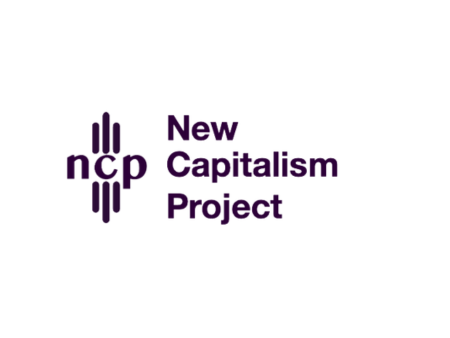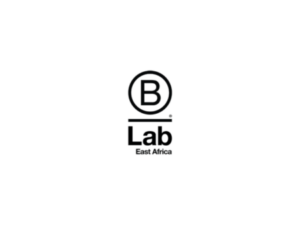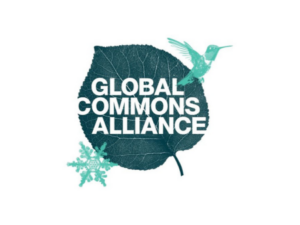The New Capitalism Project provides wraparound support to leaders in the development of innovative ideas that work towards a better economic system.
Anna Muoio of New Capitalism Project spoke with Ashley Hopkinson on January 11, 2024. Click here to read the full conversation with insights highlighted.
Ashley Hopkinson: Can you introduce yourself and talk about the problem that your organization has set out to address and how you are doing that?
Anna Muoio: I’m Anna Muoio, and I am the co-lead and co-founder of New Capitalism Project. New Capitalism Project, which I’ll refer to as NCP going forward, is a piece of field-level infrastructure. Overall, our purpose is to help create far greater coherence, connection, coordination, and action among leaders, organizations, and funders who are working to reimagine capitalism. We think of ourselves as a utility that serves the field. There are lots of different terms for that: orchestrator, field catalyst, network and movement builder. I would say we are all of the above. We are not a separate 501(c)(3) organization. We are hosted within the GIIN, the Global Impact Investing Network, which allows us to be flexible and adaptive. As a piece of field-level infrastructure, we can adapt to what we see as emerging needs in the field.
We are specifically designed to address three core problems. The first is what we call the social problem. At the highest level, NCP’s work is focused on re-imagining capitalism. The underlying premise of our work is that the current application of capitalist principles, which permeates our economy, is completely out of step with our evolving world. We have an underachieving and toxic economic system that is perfectly designed to work for a privileged few and fails to work for most people and the planet. That’s a pretty burly remit, and it appropriately qualifies as a wicked challenge and deeply systemic issue to tackle. If you believe this to be true, then it follows that the “problem of re-imagining capitalism” cannot be solved by any one organization, funder, or effort working in isolation. I think we all know this, and it leads to what we think of as the second problem NCP is addressing, which is the field problem.
How do we successfully catalyze and mobilize a broader set of field actors behind this shared agenda? Our hypothesis is that if we want to have any chance of addressing a systemic challenge as immense as re-imagining capitalism, then we need far greater field-level coherence, coordination, and action. One of our first efforts when we launched NCP in 2020 was to answer: What is the state of the inclusive capitalism field? What we learned is that you could swap out the term inclusive with any number of terms: sustainable, equitable, regenerative, multiracial, restorative, conscious, circular, solidarity, well-being, or liberation. There are so many different actors working to drive so many different visions for a transformed economic system.
We spent a lot of time understanding the field of actors and activities engaged in this work. One of the really big insights that came out of that at the field level was that if we wanted to be a field-level utility, a piece of infrastructure, a field catalyst, or a system orchestrator, we needed to design our work to address a range of challenges that were preventing greater field-level coherence. We saw five key challenges. The first is a lack of a shared vision for economic systems change, which could help to galvanize and mobilize a growing movement of leaders and their organizations. We know from a lot of the work that Bridgespan and other field catalyst thought leaders have done that any field requires a shared vision that helps mobilize greater activity.
We also recognized the challenge of insufficient field awareness and insufficient field collaboration. By that, we mean a lack of understanding among the leaders and organizations driving existing ideas, which results in really isolated impacts and isolated interventions. Hand in hand with that is insufficient collaboration and connection around those ideas, which is needed to allow us, as a field, to take bigger swings at manifesting a shared vision. These two lacks perpetuate distributed and fragmented activity.
A lack of field infrastructure was the fourth thing we noticed. What is the capacity to hold these sustained processes that support field-level strategic discussions, field-level connections, shared visioning, and collective action in a growing ecosystem? It is our observation that we have a system that prioritizes and incentivizes individual action, and often competition, among organizations rather than prioritizing the coordinated and collective work we need.
Then there is this lack of funding for collaboration and what we think of as the enabling conditions that support ongoing system health over the kind of grant-making for point solutions, specific deliverables, and time-bound impact that we as social change leaders are often required to deliver. This range of challenges has emerged, and from a field perspective, we’re asking: How can our work help address these challenges?
That leads me to the third core problem: How do we finance social change? This is a new and emergent problem area that we recognized as something we need to solve late last year, and it goes back to this lack of funding for collaborative change I was just talking about. Our emerging understanding is that we are trying to solve systemic problems through a point solution funding architecture. By that, I mean that funding goes mainly to programs and individual interventions that are built to solve individual problems. We question whether this kind of funding is going to lead us to healthier systems.
Ashley Hopkinson: Who would you say is primarily benefiting from the work, and how are they benefiting?
Anna Muoio: I think our primary beneficiaries or primary audience are the leaders and funders on the front lines of changing our economic system. Primarily that would be leaders of organizations as well as funders whose grant-making strategies are focused on re-imagining capitalism. Those are the individuals and organizations who are part of our growing network.
Ashley Hopkinson: Is NCP in this space with other movement builders and field changers who are doing this work? If so, how would you view the approach that you guys are taking as distinctive?
Anna Muoio: Yes, we are. I don’t know if it’s distinctive because I think there’s a lot of collective-aligned action work happening in this space. When we acknowledged these challenges, we moved forward into the next really big phase of NCP, which was launching the development of a field-level strategic plan that entails mobilizing a group of diverse leaders and supporting them through a multi-month, collective strategy process. We essentially said, “How can we ladder up and create a shared perspective on what’s needed to shift this broken system, beyond the individual theories of change in your organizations and beyond your individual ideas about the problem and the solutions?” This was an eight-month process with 12 different leaders from throughout the field who had typically never worked together.
We led them through the Three Horizons Framework, which helped them understand how they can collectively define how our system is broken, collectively identify the barriers to an imagined future, and collectively discover a shared vision that we can all mobilize behind. The team did all of that work, and this group developed a lot that led to this shared point of view and to where we are now. We raised the funds for and then launched the New Capitalism Project Economic System Health Lab, which is a space in our field and also a piece of infrastructure. It is a place where leaders can come to develop their systems-change hunches into practical experiments that they can launch into the field.
It addresses the need for a space to incubate and develop systems-change ideas in this field. We have been running this lab for about a year and a half now. We’ve raised about half a million dollars to support 10 different ideas and to help 10 different leaders develop their ideas in this lab. There’s a lot more to say about the collective theory of change driving this lab, but I’ll pause there.
Ashley Hopkinson: Since you guys are fairly new in the field and have seen a great amount of progress in a short period of time, I wanted to ask how you’re measuring your progress. Would you point to the Economic Systems Lab as evidence that you’re making progress toward your aim?
Anna Muoio: Yes, definitely. We have been building a set of really critical assets that are essential for system transformation work, and I can share a few of those with you.
First, through this collective strategy process, this group of leaders developed an incredibly powerful and compelling shared vision for a transformed economic system. We worked really hard to move beyond the high-level words of, “We need a multiracial, equitable, sustainable, regenerative, capitalist, economic system.” What does that actually mean? What does business look like in such a future? How does capital flow in this transformed economic system? What is the role of investors? What is the role of government? We dove deep into unpacking and being clear about the vision of a transformed economic system.
We see that as a pretty powerful impact coming out of this work as it helps align a very diverse group of leaders and organizations under one very broad umbrella. We see this vision as written in pencil, not carved in stone, but there are seven pages of really compelling, profound, bold, and courageous visioning that this team did together. The byproducts of that are also really powerful: relationships, trust, increased awareness among leaders, and increased understanding of how different organizations’ tactics can work behind a shared vision for change. We see this as a core impact. Another asset or impact of our work is the launch of the lab, which was a utility that didn’t exist before.
We have recruited ideas and leaders into this lab, and although the 10 ideas we have incubated are independent, they are interconnected as well because they are all aligned behind manifesting different aspects of a shared vision and designed to address the barriers to that vision. An asset that we have been developing is collective sense-making and awareness of the system we are trying to intervene in. That’s the coherence we talk about.
We’re trying to tackle some very big leverage points around our current paradigms, including the barriers inherent in the narratives, stories, mindsets, and values that drive our current neoliberal system. We have found that where there is outsized concentration of power, we often find the greatest dysfunction. How can we launch ideas that start to tackle the kind of power dynamics and power relationships that need to be disrupted?
We have a lot of ideas that are tackling the barriers we see in our corporate governance ecosystem, including the practical policies and practices that drive the current dominant systems. We’re exploring ideas around how we can reimagine the future of fiduciary duty when fiduciary duty is the source code operating error of our entire system.
We’ve been building a much more coherent set of interventions. For example, Liberation in a Generation is working on a narrative change infrastructure idea. Yes, that can operate as an individual, isolated intervention, but it will be way more impactful if we start to recognize there are clusters of collaboration and impact emerging from this portfolio [of work we’re building, and which they’re a part of.] That idea around narrative change infrastructure has a relationship with and depends on several other ideas that are emerging in our portfolio. How can we hold these ideas, and the leaders and organizations driving them, in a holistic container rather than going back into the field and returning to this fragmented, distributed way of engaging with problems?
Ashley Hopkinson: Do you view the impact as multi-tier? You have these great collaborations where people have come together and are working on all these ideas that result in a shared vision, and you also have this convening where people are starting to see the interdependence and the interconnectedness in a very tangible way. Do you view those as separate? Would they convene if it was not for this? Would these people ever be in the same room?
Anna Muoio: They definitely wouldn’t, and they will tell you that. We’re hearing some leaders say, “I don’t want to implement this idea without that organization and that leader, or without this other leader driving that project. I need to learn from what they’re doing in order for my project to be effective. I need to adapt because when tackling wicked problems, you need to create an equally adaptive and resilient human system.” I think one of the greatest outcomes or impacts is this awareness among key leaders in the field.
There’s been an expansion of our community over time. During COVID, those 12 leaders I talked about earlier went through a year-long project meeting every other week for 90 minutes. We met virtually for a year doing collective strategy work, then we expanded our network when we launched the lab. We now have had 10 organizations in the lab for the past year developing their ideas. One of the criteria for being in the lab is that your idea has to draw in other collaborators. It can’t be an idea that you then go and implement on your own as Majority Action or Liberation in a Generation. You need to develop and implement the idea with others.
We are seeing the development of this approach, and the ensuing interventions and actions, as a way to support a much different type of mobilization among leaders and organizations in the field. We see this as a critical asset. We’re not just focusing on what we’re doing, but we’re focusing on who we’re doing it with, and how we are increasing the connections among the field actors behind the shared vision.
Ashley Hopkinson: How would you describe the role NCP is playing in systems change? Is that the bedrock of what you’re doing?
Anna Muoio: Yes. I would say we are conveners, we are catalysts, we are system strategists, and we are coaches. We have raised funds which we then distribute and disperse through the lab and through honorariums for participation in the work because we believe we should not be extractive. We should not extract people’s time, insights, or knowledge. Depending on what day it is, we’re wearing probably 12 different hats as system orchestrators.
Ashley Hopkinson: What would you say is needed from other actors in this space to get to that shared vision and to get to the nucleus of why New Capitalism Project was created in the first place? What do you see as missing that might be needed to create even greater cohesion and even greater impact?
Anna Muoio: Greater awareness among leaders and funders of what it takes to tackle adaptive challenges and wicked problems. Awareness of the different mindsets, the different incentives, and the different ways we need to finance this work. There’s a great framing that Otto Scharmer from the Presencing Institute uses. He says, “How do we move from ecosystems to ecosystem ways of working?” You can argue that we have a philanthropic ecosystem that identifies, supports, and resources the individual–the social entrepreneur, the social enterprise, the social innovation. How can we move to a more collective and connected way of working? One of NCP’s main roles is demonstrating and modeling a more collective way of working.
How, then, do we provide support to move beyond individual theories of change? How do we provide support that reduces the competition and nonprofit hunger game mentality that is so prevalent? How do we continue to develop a shared understanding and shared awareness of systems? How do we bridge that tension between, “I’m a leader running an organization and I have to deliver on my theory of change,” with “I am an actor in a larger whole, but I don’t get resourced to play a role in that larger whole because I’m incentivized to deliver on my own, individual theory of change?” That’s a big obstacle for us. Then very practically, there’s the question of, “How do we finance systems change?” How do we move away from a point solution funding architecture that’s focused on short-term deliverables and a transactional, “I want to buy this outcome” mindset, to financing long-term system health? That requires a different financing approach.
Ashley Hopkinson: That’s a really powerful framework. I think what you’re responsible for as a leader is very visible while the role you play as an actor is often invisible work. It is typically very heavy work, but it’s human nature to lean into what is visible. Yet the invisible role you play as an actor within the system, across sectors is crucial.
Anna Muoio: Exactly. You just nailed what is, I think, one of our biggest challenges. So much of the work supporting ongoing system health is invisible, and we don’t value what we can’t see. It’s also undervalued because it’s so hard to track, measure, and document the invisible work we do.
I just wrote a piece with Robert Ricigliano, who is the systems and complexity coach at The Omidyar Group. We talk about the enabling conditions for systems health that we aren’t typically well-versed in understanding, as well as funding and resourcing. We see these enabling conditions as things like open networks, and what we think of as the invisible work of aligned action or networks. How can NCP play a role in illuminating the need to value and resource this kind of work if we truly want to move towards system health?
Ashley Hopkinson: Is there something that NCP tried that hasn’t worked, or that hasn’t met an expectation you had? What did you learn from that? How did you move on from that or develop something new out of something that didn’t work or didn’t land in the way you anticipated?
Brendan Lehan: I would return to the explanation Anna gave of how, since the beginning, there’s been this theme of the need for funding for collaboration, which is different than the predominant type of funding that we see in our philanthropic system, to create a more collaborative system. If I think about the work of the lab, the work of the idea champions who have been participants in the lab, we’ve been collectively trying to grapple with this question of, What does that funding look like? How is it different? What are the characteristics that it needs?
We also need to ask, What do we need to do? How do we need to adapt as leaders? What does it look like for us to work collaboratively? I can’t think of a specific failure that stood out along the way, but these are questions we’ve had to keep coming back to as we’ve moved from the vision to the lab. What does a collaborative systemic idea look like if we’re thinking about what our organizations want to do and what we want to do that’s transformative? What do I need that’s different from my funding partners and my funding collaborators that would allow this type of thing to happen? Every question that you answer raises two more challenges, multiplying effective challenges in this particular area of the question of: How do you fund this work?
That’s one example of a really specific nut that’s hard to crack in this area. It’s directed NCP’s attention as a community to saying, “We could continue to work on this.” This is not an afterthought. It’s not that we have ideas about changing the system and we need to get them funded. The question of how to fund these ideas is part of changing the system, if that makes sense.
Ashley Hopkinson: That makes sense. We answer a question and then we unbox another challenge, and then within that challenge, we unbox another challenge.
Anna Muoio: That’s a great way of characterizing it. I would just add that what’s really exciting for NCP’s work in 2024, and also a little terrifying for me personally as a leader, is that we’ve spent almost three years building, and now we have a way to look at our work to date. We have this integrated stack of assets and activities: the shared vision, the community and the network, the set of ideas that are in this integrated portfolio. We’ve started to support how these leaders are seeing their idea exist through convenings and conversations in what we’re calling clusters of collaboration. We could tinker in that shop until the cows come home, but if we don’t resolve or try to address how to finance this system we’ve built, NCP will fail.
We will fail because we will exhaust the good intention and commitment that drives leaders to show up to NCP. They have been showing up for three years. We have not diluted the value proposition for NCP, but we need to get some of this experimentation out into the world. If we don’t, then yes, on the one hand, the New Capitalism Project will have succeeded in that we can draw a lot of impacts and learnings. But we’re just getting started, and it’s taken us over three years to get to this point. The impatience of people for results is a challenge for us. We are actively working on designing and hopefully capitalizing a fund for economic systems change work coming out of this lab. We are in this emerging conversation around what’s called systemic investing. But how we think about financing systems change is very different from the existing grant-making point solution funding systems.
We’ve added an 11th element to our portfolio, which is the design and catalyzing of a system health fund, which we’re super excited about, but it is yet another enormous mountain that we have to climb, and we may not succeed. We may not be able to do it. That will put into question all this work we’ve done. It’s a very daunting challenge we have going forward.
Ashley Hopkinson: I think what’s great about this work is also what’s hard about this work. You get all the energies mobilized in the room, people coming together to give you their best and brightest ideas. Then you have to figure out: How do you fund these best and brightest ideas? It reminds me of Stanford’s innovation program for journalism with JSK fellows. You have great media leaders who go in with wonderful ideas about how to transform our media landscape and our press corps. Then they come out and have to meet the actual system we live in, and it’s very different from this protected, innovative space.
Anna Muoio: You just put your finger on something that makes the work we’re doing, and the way we’re doing it, slightly different from the rest. You go into this lab or into this convening, and you have all these great ideas, all this intention and will, and then you go out into the world and return to the existing ways stuff is always done. We are trying to defy that trajectory and keep these leaders and ideas in our hive, so to speak.
Jeremie Greer who runs Liberation in a Generation, has this incredible idea for how to build a new narrative infrastructure that supports the narratives we need to transform our economic system. An enormously big, audacious goal. If he leaves the hive and tries to do this on his own, maybe he’ll be successful, but he’s going to encounter enormous currents and countervailing winds that may prevent him from gaining traction. How can we create a safe space, a refuge, so leaders can go out and do their experiments, but then come back to the hive with the insights, knowledge, and yummy pollen they’ve gathered from different places outside the hive? Then, we can all learn from what Jeremie is doing, and Jeremie’s idea can inform Eli’s idea, which can inform Fran’s idea. In the end, we are a hive mind, not an individual bee.
Ashley Hopkinson: What would you say throughout this process has been one of your teachable lessons or insights? What is your advice, or the best wisdom you could impart?
Anna Muoio: I think it’s having faith that the path to deep transformation is built, walked, and explored with others. There’s nothing we can do in this world on our own. That’s hard because we have a philanthropic industrial complex that privileges and prioritizes funding the individual.
How, then, do you do this work in more co-creative and collective ways? That requires the capacity to be the convener and to hold the whole. To help a group ladder up to a greater story for change, one that is above and beyond their individual stories and individual theories of change, which they still have to develop and fortify because that’s how we get funding in this world. Be a relentless and ruthless collaborator. Brendan, I’m curious what you would add to that.
Brendan Lehan: I agree. A related point is the power of developing a shared vision in a community. That also requires faith because for the more action-oriented folks, that can feel like taking a step back rather than a step forward. But our experience has taught us that it is a profound step forward.
Ashley Hopkinson: In a world where you’re trying to address pressing issues, it’s sometimes hard to feel you have the luxury of taking a step back to really think. However the value of design thinking in long-game work is critical. Having an incubator and a hive to support that kind of thinking is so important.
Anna Muoio: Yes, and we heard that. We’ve had leaders of organizations say they have dramatically changed their own organization’s strategy as a result of participating in this collective work with us over the past year. We have had people who are in this hive say, “It has helped me understand the field and the system better, and I’m able to orient my own programmatic interventions accordingly.” You have to be able to live in your own organizations, but also be a part of that sustained, field-level conversation and agenda-building.
Going back and forth between those two containers is really valuable. We say in systems-change work that increasing the quality and quantity of connections among individuals and improving the flow, quantity, and quality of people’s interactions, is a system intervention in and of itself. That’s an invisible impact and an invisible asset, but I don’t know how you do system health work without it.
Ashley Hopkinson: What is your vision for the next few years? I know that you’re in the work, and your feet are probably grounded in what you need to do as soon as you get off of this call, but how do you see the work evolving? What do you hope for?
Anna Muoio: Figuring out how we get this flywheel of activities and assets going. We’ve been paving the way to launch a set of really profound experiments into the field and create a hive learning and leadership infrastructure that will go on for the next two or even five years. I think success for us now is whether we are able to design an economic system health fund that can activate a range of these ideas so they can spool out and play out over years. That will allow us to add ideas and interventions to our flywheel and continue to increase the human ecosystem behind this work. Then, we can learn what it takes to do collective systems change work in really intentional ways. Could we launch a $50 million fund over the next three to five years to support activating this portfolio of interventions, and the people, leaders, and organizations required to deliver on them?
Ashley Hopkinson: That would be great. Brendan, do you have anything you want to add?
Brendan Lehan: I would just add that from the very first day, NCP has been about experimentation around the question: How do you develop field-level coherence, coordination, and collaboration? Each layer in the stack has been a result of asking a different question or asking a deeper question as that experimentation unfolds. So what’s next? More experimentation. Anna so eloquently described what the next big experiment is, but our focus is that mode of experimentation, and trying to respond to what we’re learning about coherence, coordination, and collaboration.
Ashley Hopkinson: Thank you both so much for talking with me today.
Click here to read the full conversation with insights highlighted.
Ashley Hopkinson is an award-winning journalist, newsroom entrepreneur and leader dedicated to excellent storytelling and mission-driven media. She currently manages the Solutions Insights Lab, an initiative of the Solutions Journalism Network. She is based in New Orleans, Louisiana.
* This interview has been edited and condensed.
Read about other social innovations in economics.







